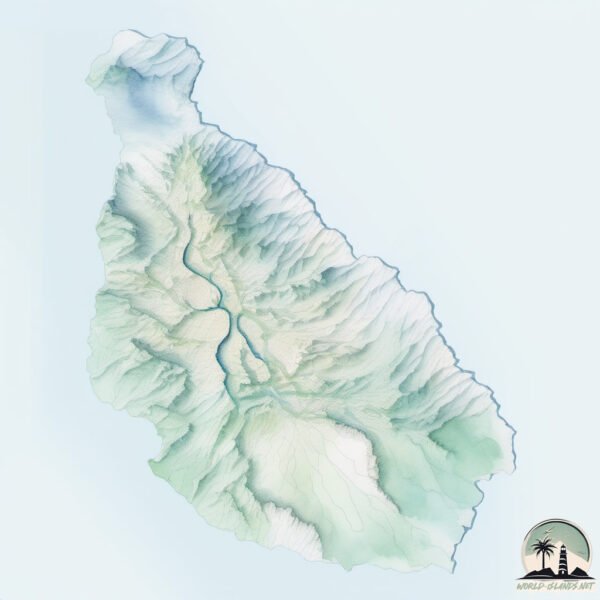Santiago-276712

Welcome to Santiago, a Tropical island in the South Pacific Ocean, part of the majestic Pacific Ocean. This guide offers a comprehensive overview of what makes Santiago unique – from its geography and climate to its population, infrastructure, and beyond. Dive into the details:
- Geography and Size: Explore the island’s size and location.
- Climate and Weather: Weather patterns and temperature.
- Topography and Nature: Uncover the natural wonders of the island.
- Infrastructure and Travelling: Insights on reaching, staying, and making the most of your visit.
- News and Headlines: Latest News.
Geography and size of Santiago
Size: 578 km²
Coastline: 125.2 km
Ocean: Pacific Ocean
Sea: South Pacific Ocean
Continent: South America
Santiago is a Large Island spanning 578 km² with a coastline of 125 km.
Archipel: Galapagos Islands – An Ecuadorian archipelago in the Pacific Ocean, famous for their unique wildlife and as a key location for evolutionary studies.
Tectonic Plate: Nazca – An oceanic tectonic plate off the west coast of South America. Famous for the Nazca Lines, it’s primarily known for its subduction under the South American Plate, leading to the Andes Mountains’ formation and significant seismic activity.
The geographic heart of the island is pinpointed at these coordinates:
Latitude: -0.26651799 / Longitude: -90.71237913
Climate and weather of Santiago
Climate Zone: Tropical
Climate Details: Tropical Savanna, Wet
Temperature: Hot
Climate Characteristics: Defined by distinct wet and dry seasons with high temperatures year-round. Pronounced rainfall occurs during the wet season, while the dry season is marked by drought.
Topography and nature of Santiago
Timezone: UTC-06:00
Timezone places: America/Chicago
Max. Elevation: 868 m
Mean Elevation: 183 m
Vegetation: Deciduous Broadleaf Forest
Tree Coverage: 25%
The mean elevation is 183 m. The highest elevation on the island reaches approximately 868 meters above sea level. The island is characterized by Plateau: Elevated flatlands rising sharply above the surrounding area, with a maximum elevation over 500 meters but a mean elevation less than 300 meters, forming unique highland areas on islands.
Dominating Vegetation: Deciduous Broadleaf Forest
Composed of broadleaf trees that shed their leaves seasonally. These forests are commonly found in temperate zones and experience distinct seasonal changes. Santiago has a tree cover of 25 %.
Vegetation: 13 vegetation zones – Exceptionally Diverse Island
Islands with more than ten vegetation zones are among the most ecologically rich and varied in the world. These islands are akin to miniature continents, boasting an incredible array of ecosystems. The sheer range of habitats, from high peaks to deep valleys, rainforests to deserts, creates a mosaic of life that is unparalleled. They are crucial for conservation and ecological studies.
Infrastructure and Travelling to Santiago
Does the island have a public airport? no.
There is no public and scheduled airport on Santiago. The nearest airport is Seymour Galapagos Ecological Airport, located 35 km away.
Does the island have a major port? no.
There are no major ports on Santiago. The closest major port is LA LIBERTAD, approximately 1091 km away.
The mean population of Santiago is 3 per km². Santiago is Gently Populated. The island belongs to Ecuador.
The name of the island resonates across different cultures and languages. Here is how it is known around the world: Arabic: جزيرة سانتياغو; Spanish: Isla Santiago; French: Île Santiago; Portuguese: Ilha de Santiago; Russian: Сан-Сальвадор; Chinese: 聖地亞哥島
Continuing your journey, Pinzon is the next notable island, situated merely km away.
Santiago island and Praia Cabo Verde / Cape Verde



Ecuador is classified as Developing region: Regions characterized by lower income levels, with economies in the process of industrialization and modernization. The level of income is Upper middle income.
News – Latest Updates and Headlines from Santiago
Stay informed with the most recent news and important headlines from Santiago. Here’s a roundup of the latest developments.
Please note: The data used here has been primarily extracted from satellite readings. Deviations from exact values may occur, particularly regarding the height of elevations and population density. Land area and coastline measurements refer to average values at mean high tide.
